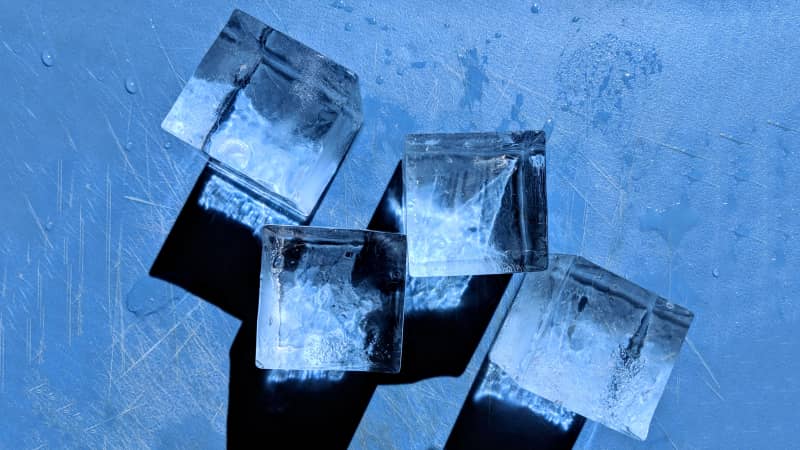In the last 20 years, fancy ice spheres, cubes, and columns have become a mark of quality in high-end bars, indicating to customers that the care taken by the bartender didn’t end with the construction of the drink. If anything, there’s been a bit of a nightlife arms race where fancy ice is concerned, with bartenders striving to one-up each other, carving special ice balls by hand or developing techniques to produce ice that’s perfectly clear.
What Is Clear Ice, and How Can I Make It at Home?
Published Dec. 11, 2019.

But what is clear ice? Isn’t all ice clear? As it turns out, no. As researched by cocktail writer Camper English and others, conventional ice appears slightly cloudy because substances in tap water—air, dirt, and minerals—are pushed to the center as the water freezes from the outside in. In clear ice, all these substances are pushed to the bottom of the cubes as the water freezes from the top down, a phenomenon that English has dubbed “directional freezing.” Think of a lake in winter: Its water freezes from the top down, pushing the impurities and dirt toward the bottom of the lake, where it’s warmer and less likely to freeze. As a result, the ice that sits on top is perfectly clear.
To create clear ice, English reasoned, you have to force the water to freeze from the top down. The clear ice makers in our testing do this by insulating the water on the bottoms and sides of the molds or trays, leaving only the top of the water exposed to the freezer air. As the water freezes from the top down, the impurities are pushed downward, and drip out through an escape hole or holes into a reservoir below the mold or tray itself, leaving only the clear water—now ice—behind.
But you don’t necessarily need to buy a clear ice maker to make clear ice at home. If you have enough space in your freezer, you can make clear ice with just a few simple tools. We found a method that worked for us.
We started with distilled water, which cut the impurities to nearly zero. But since air dissolves more readily in cold water, we still had some big bubbles in our ice. By boiling the water and then immediately pouring it into the ice cube tray, most of that air dissipated. The ice still had a hazy center, albeit a smaller one. Insulating the sides and bottom of our ice trays using a baking dish lined with dish towels ensured our ice froze from the top down, pushing trace impurities and air toward the very bottom of our cubes. This left us with 95 percent perfectly clear cubes. You can substitute filtered tap water; however, the ice will not be quite as clear.
1. Fold 3 dish towels in half widthwise, then stack in 13 by 9-inch baking dish, allowing towels to overhang edges.
2. Arrange two 6½ by 4½-inch ice cube trays in center of prepared dish. Roll up additional towels and tuck into sides of dish as needed to ensure trays are packed snugly.
3. Bring 6 cups distilled water to boil in saucepan and let boil for 1 minute.
4. Working in batches, carefully transfer water to 4-cup liquid measuring cup, then pour into trays. Let cool completely, about 30 minutes; you may have extra water.
5. Place baking dish in freezer and let sit, uncovered, until ice is completely frozen, at least 8 hours.
